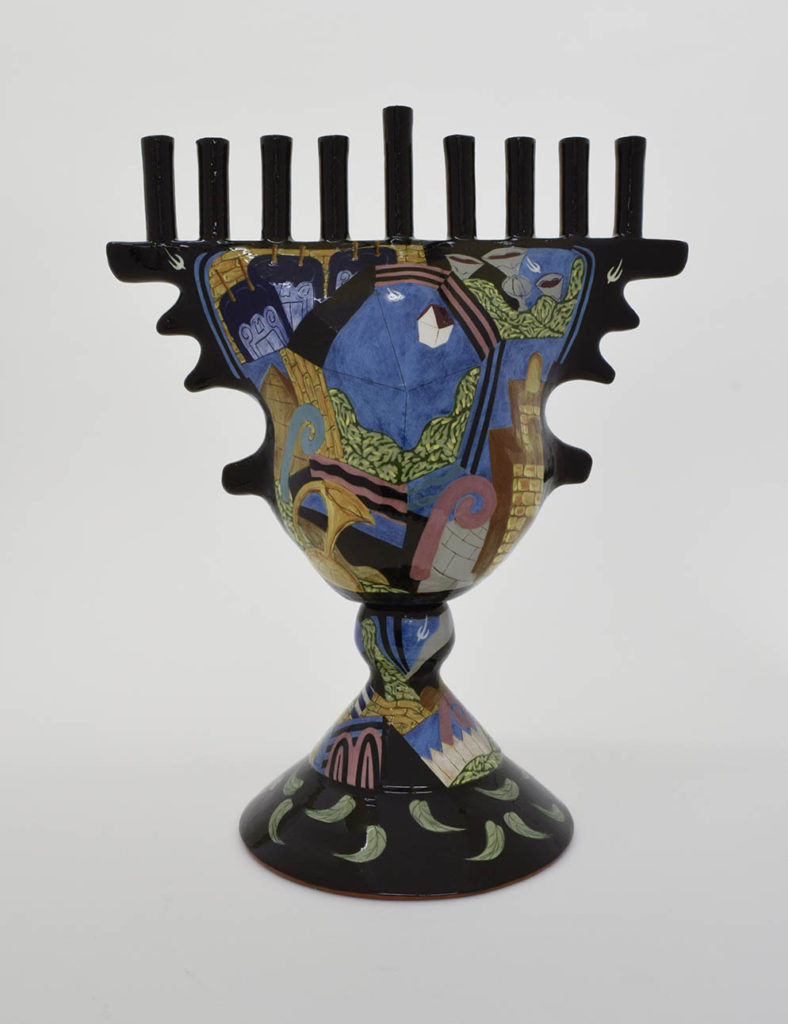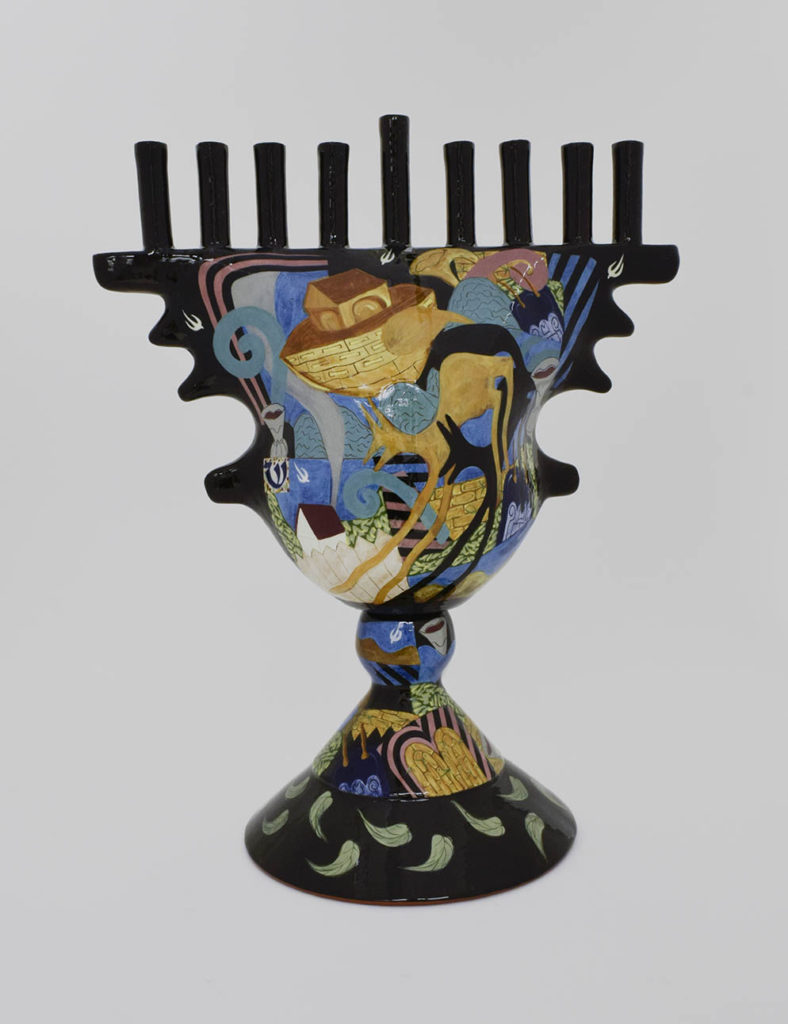Hanukkah Lamp
Robert Lipnick (b. 1951)
USA, 1992
Glazed earthenware, h. 17 in.
B’nai B’rith Klutznick National Jewish Museum, TAP 0060
Hanukkah is a postbiblical festival that recalls the deliverance of the Jews from the tyranny of
the Syrian-Greek government in 165 B.C.E. This triumph is the first time in recorded history that
a people fought for religious freedom. As the Jews entered Jerusalem and prepared to rededicate
the desecrated Temple, they did not have enough oil to rekindle the lamps whose light would
signify God’s eternal presence with them. According to the apocryphal book of Maccabees, a
miracle occurred; a small vial of oil lasted eight days, long enough to find more oil and keep the
lamps burning continuously.
The struggle to liberate the Holy Temple and the victory of the Maccabees over King Antiochus
and his troops are recalled during Hanukkah by lighting a hanukkiyah, or Hanukkah lamp for
eight days; each evening one more light is lit, so that on the eighth day all the lights are burning.
A ninth light, the shamash (servant), is used to light the others.
A boat and animal motifs, Noah’s ark and its passengers, cover the trunk and base of this
Hanukkah lamp. The artist is known for creating works that are abundant with symbols alluding to
Jewish history. In this instance, he aligns the rededication of the Temple in Jerusalem
associated with Hanukkah with God’s promise to Noah to never flood the earth again.
Lipnick earned a Bachelor of Science from the University of Maryland and a Master of Fine Arts
from the University of Notre Dame, Lipnick is a familiar, widely respected educator throughout
eastern Iowa, and has taught for such area institutions as Scott Community College, Clinton
Community College, and Marycrest College. The artist has had his pieces displayed nationally at
venues including the Figge Art Museum, Minneapolis Art Institute and the Jewish Museum in
New York City. Lipnick remains an active proponent for art education.


